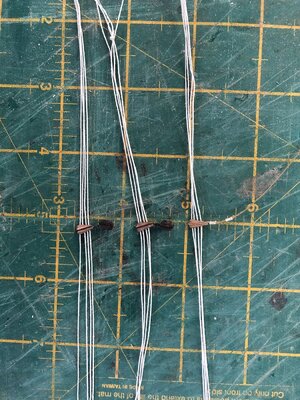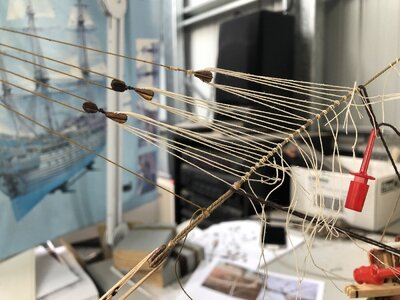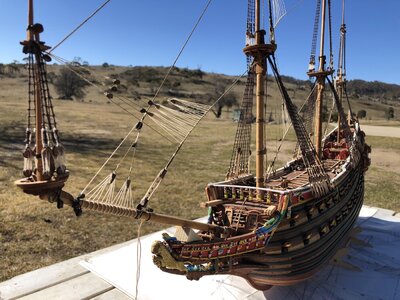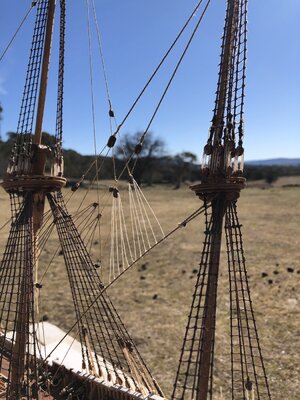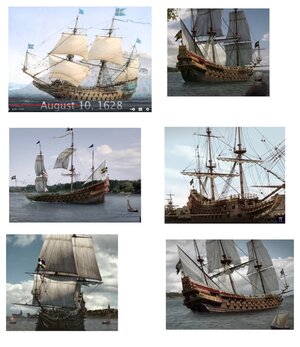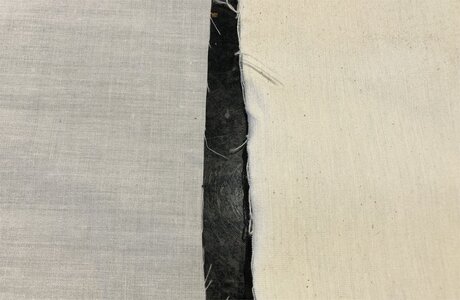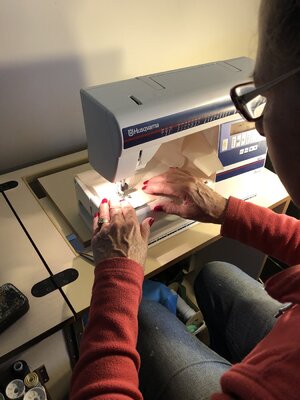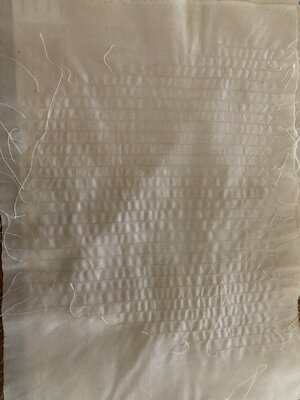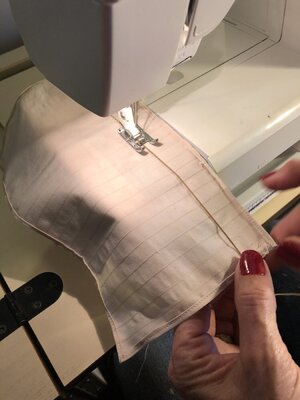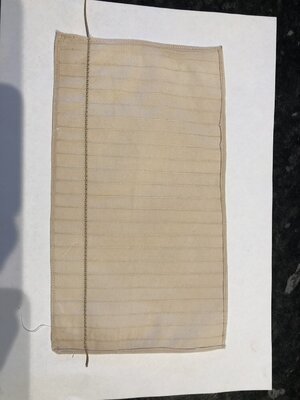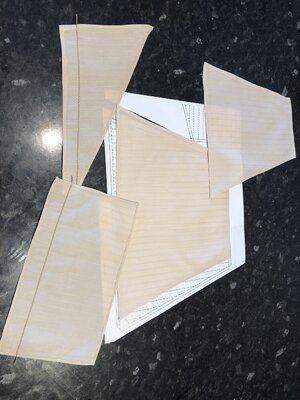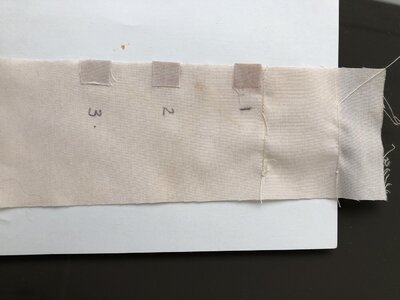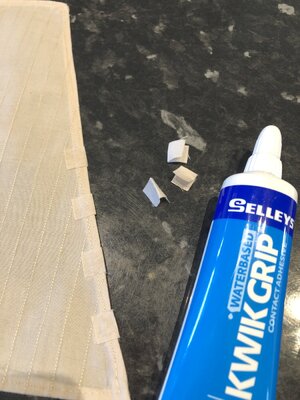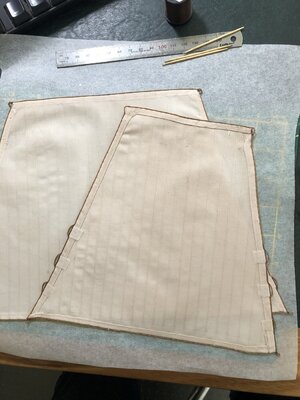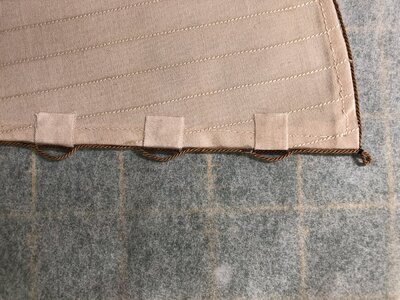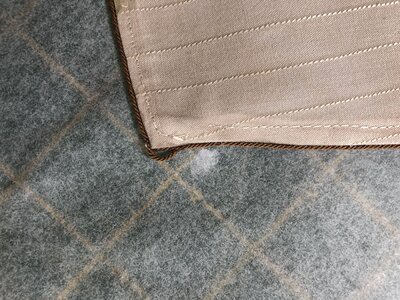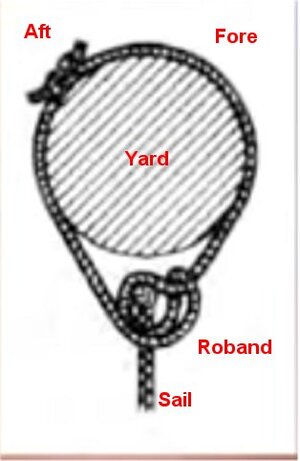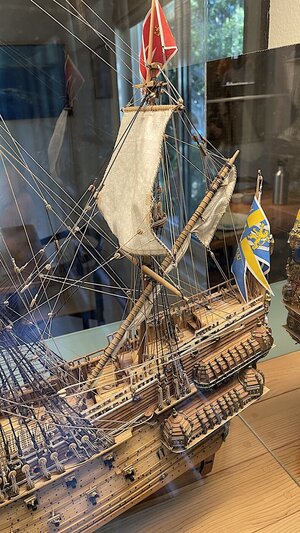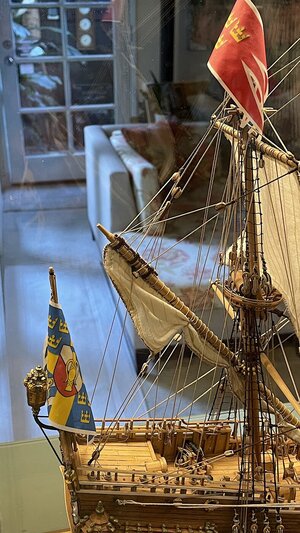Paul,
Referencing your Point 2, this was an error in my upload version. My starting point was the museum's diagram, which of course had the pin rails on the bulwarks. My later edition (which I have updated Post #259 and upload again here as a PDF), had these belay pin rails removed. It is not as simple as merely moving the indicated locations to the cap-rail, since between the two Belaying Plans, there is a discrepancy which relates to the location of the Mizzen Bowline. This is located (as the central pin of the replaced pin rail) in the museum's plan, but does not occur on the Stolt Rigging Plan. I have taken the liberty of adding it for consistency as it is needed and obviously has to be secured somewhere. Please feel free to download and use the updated version of the plan.
Referring to your first point, the Crojack Yard Brace and the Mizzen Topsail Brace belaying points near the stern are a little confusing. If we go to various other modellers interpretations, I like the Janssen model which shows the Mizzen Topsail Brace coming back to be secured under the top railing (presumably to a cleat or point inboard), and the Crojack Yard Brace probably to an eyebolt on the after deck (see below).
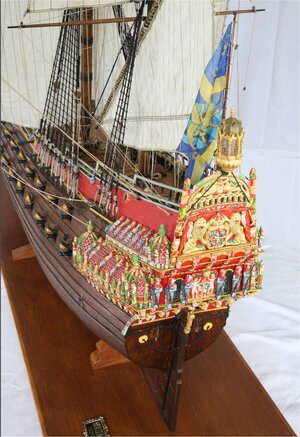
On the Corel model by Michael (md1400cs), he uses two belaying pins through the LOWER railing along the bulwarks of the afterdeck. This to me seems a much simpler and better solution, but at the end of the day, even Fred Hocker is unlikely to know with any certainty where these two belay points are located. Personally I lean to Michael's solution (see below), but then, if you look forward along the same railing on his model, he has placed additional belaying pins, where the Belay Plan does not say there are any:
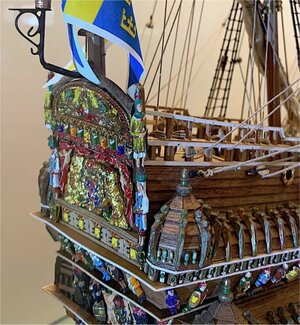
Yet another interpretation comes from Frank (fmodajr) where he merely secures the lines to the vertical railing supports (see below). I am not an advocate of this approach, as I don't think this would be a solution for a real ship.
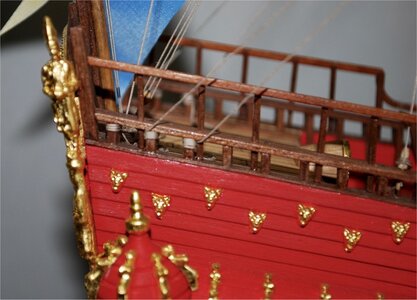
Welcome any other ideas...
PeterG
Referencing your Point 2, this was an error in my upload version. My starting point was the museum's diagram, which of course had the pin rails on the bulwarks. My later edition (which I have updated Post #259 and upload again here as a PDF), had these belay pin rails removed. It is not as simple as merely moving the indicated locations to the cap-rail, since between the two Belaying Plans, there is a discrepancy which relates to the location of the Mizzen Bowline. This is located (as the central pin of the replaced pin rail) in the museum's plan, but does not occur on the Stolt Rigging Plan. I have taken the liberty of adding it for consistency as it is needed and obviously has to be secured somewhere. Please feel free to download and use the updated version of the plan.
Referring to your first point, the Crojack Yard Brace and the Mizzen Topsail Brace belaying points near the stern are a little confusing. If we go to various other modellers interpretations, I like the Janssen model which shows the Mizzen Topsail Brace coming back to be secured under the top railing (presumably to a cleat or point inboard), and the Crojack Yard Brace probably to an eyebolt on the after deck (see below).

On the Corel model by Michael (md1400cs), he uses two belaying pins through the LOWER railing along the bulwarks of the afterdeck. This to me seems a much simpler and better solution, but at the end of the day, even Fred Hocker is unlikely to know with any certainty where these two belay points are located. Personally I lean to Michael's solution (see below), but then, if you look forward along the same railing on his model, he has placed additional belaying pins, where the Belay Plan does not say there are any:

Yet another interpretation comes from Frank (fmodajr) where he merely secures the lines to the vertical railing supports (see below). I am not an advocate of this approach, as I don't think this would be a solution for a real ship.

Welcome any other ideas...
PeterG
Attachments
Last edited:



